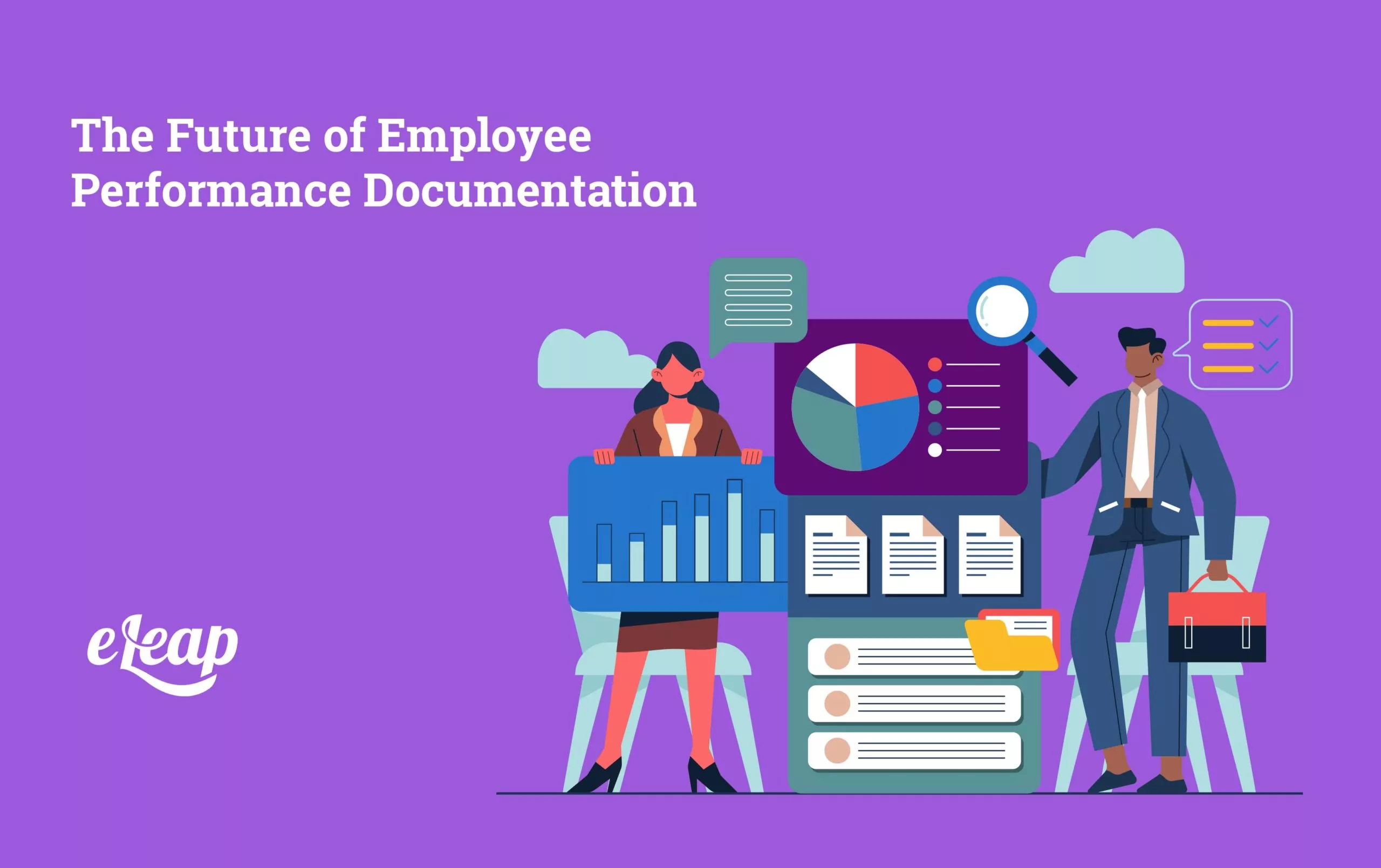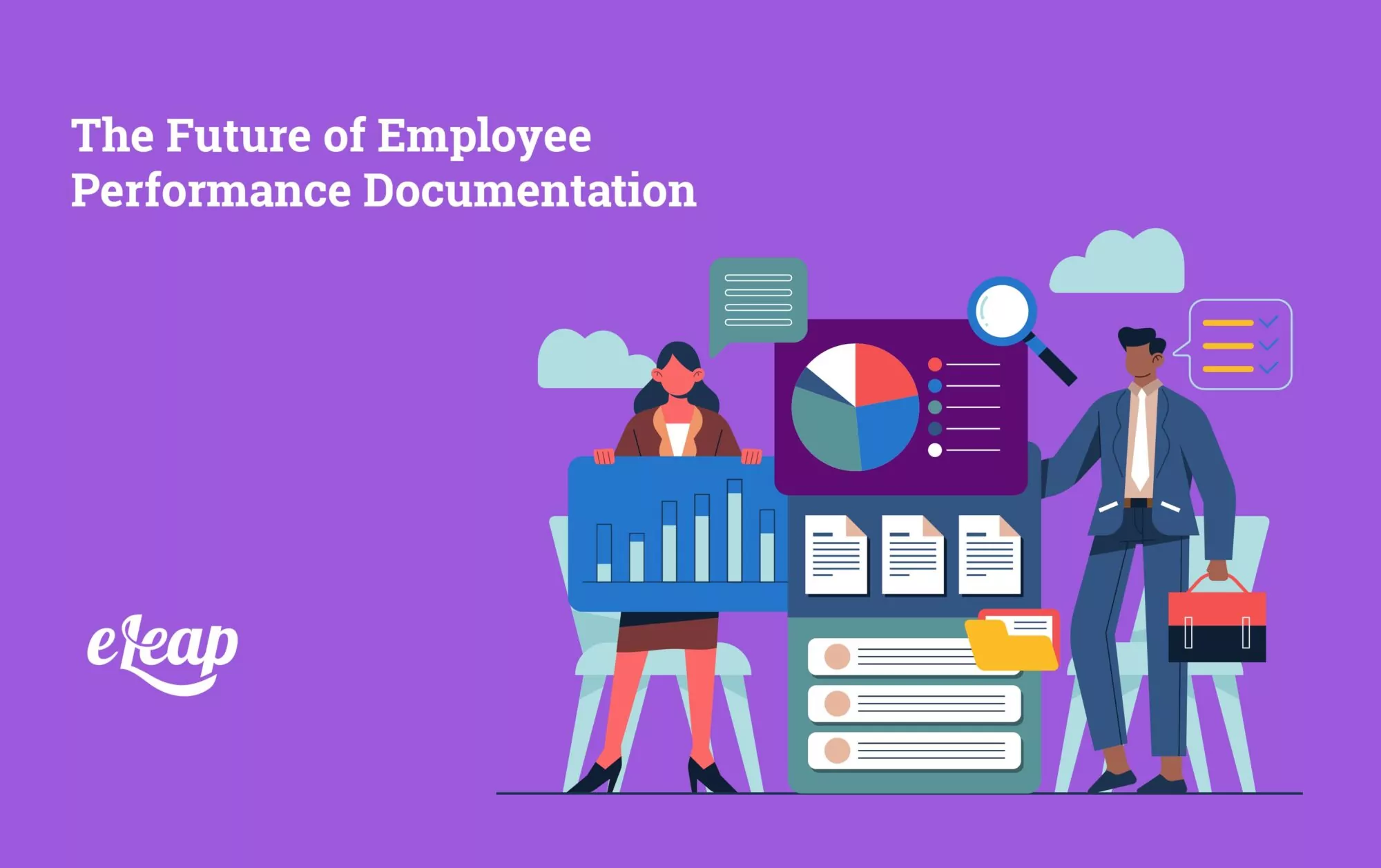The Future of Employee Performance Documentation

Employee performance documentation has long been an integral part of the modern workforce. It provides a tangible record of employee progress, strengths, and areas for improvement, helping organizations make informed decisions about promotions, raises, and, when necessary, disciplinary actions. Traditionally, this documentation was managed through annual reviews, often providing a snapshot of an employee’s performance based on subjective assessments. However, as business practices evolve, so does the need for more accurate, consistent, and technology-driven performance documentation. Explore how eLeaP®’s Performance Management Platform can simplify evaluations, boost productivity, and drive measurable results.
As organizations transition to more agile, data-driven models, performance documentation is needed more than ever to keep pace with these changes. Technology, AI, and real-time feedback systems are reshaping the landscape of performance evaluation, pushing businesses to rethink how they manage and document employee performance. This transformation involves adopting new tools and embracing a mindset that views employee development and performance tracking as a continuous process rather than a one-off event.
In this article, we will explore the future of employee performance documentation. We will examine current trends, challenges, and the impact of technology on this vital business practice and offer strategies to help organizations stay ahead of the curve.
Why Employee Performance Documentation is Crucial
Ensuring Legal Compliance and Risk Mitigation
Employee performance documentation is critical in safeguarding organizations from potential legal issues. Detailed records of performance reviews, feedback sessions, and employee behavior can protect businesses from accusations of unfair treatment or discrimination. Without proper documentation, a company may become vulnerable to legal challenges, especially if it terminates an employee or passes them over for promotion, and the employee claims that the decision was unjust.
For instance, if an employee claims wrongful termination, well-maintained performance records provide tangible evidence that the decision was based on objective performance metrics, not arbitrary factors such as race, gender, or personal bias. In the U.S., where employment laws are complex and vary by state, having a clear record of employee performance is indispensable for maintaining compliance with regulations such as the Equal Employment Opportunity Act (EEOA) and the Americans with Disabilities Act (ADA).
Beyond termination, performance documentation helps businesses comply with other HR requirements, such as meeting the Occupational Safety and Health Administration (OSHA) standards. Therefore, organizations must maintain a consistent and accurate record-keeping system that tracks performance and provides a defensible account of decisions made throughout an employee’s tenure.
Aligning Individual Performance with Organizational Goals
Aligning employee performance with organizational goals is key to long-term success. Performance documentation serves as a bridge between an individual’s daily activities and the business’s strategic objectives. It explains how healthy employees contribute to the company’s broader goals and whether they meet productivity, quality, and overall output expectations.
For businesses to thrive in the long run, individual performance must align with larger corporate objectives. Performance documentation helps to ensure this by providing managers with a means of tracking an employee’s achievements and areas needing improvement. By regularly documenting performance, managers can identify misalignments early and take corrective actions. This process might involve realigning goals, offering additional training, or providing more precise direction on priorities.
In addition, documented performance reviews allow employees to see their progress, which increases their engagement and commitment to the organization. Employees who understand how their contributions impact the business are more likely to feel motivated to improve their performance. This feedback loop contributes to employee satisfaction and overall business productivity.
Enhancing Employee Engagement and Development

When performance documentation is used for employee development, it shifts from a mere evaluation to a more holistic engagement strategy. Properly documented feedback sessions offer employees valuable insights into their strengths and areas for improvement. If delivered effectively, these sessions motivate employees to enhance their skills and take ownership of their development.
For example, performance documentation can include notes on career aspirations, skill development plans, and progress toward professional certifications. When employees see that their company is invested in their growth, they are likelier to stay engaged and committed to achieving their goals. This stage also creates opportunities for personalized development programs that can be tracked and refined over time.
This forward-looking approach to performance documentation fosters a culture of continuous improvement, where employees feel empowered to grow and contribute to the organization’s success. Documentation should not be about identifying faults but charting a path for individual and organizational development. By making performance documentation a cornerstone of professional growth, organizations can create an environment where employees consistently strive to reach their potential.
The Shift Toward Digital Transformation in Performance Documentation
Embracing AI and Automation for Smarter Evaluations
As technology continues to reshape every aspect of business, employee performance documentation is not exempt. One of the most significant transformations is incorporating artificial intelligence (AI) and automation tools. These tools help streamline the performance evaluation process, making it more objective, data-driven, and efficient.
AI-powered tools can analyze performance data in real time, flagging potential issues and identifying patterns that may go unnoticed. For instance, AI can track employee performance metrics like task completion rates, quality of work, and collaboration and generate real-time reports that are accessible to both managers and employees. This process removes much of the subjectivity associated with traditional performance evaluations and ensures a more fair, balanced approach.
Moreover, AI can automate routine tasks such as scheduling performance reviews, sending reminders for follow-up actions, and analyzing feedback from multiple sources (e.g., peers, customers, and managers). This level of automation reduces administrative burdens and allows HR professionals and managers to focus more on employee engagement and growth rather than spending time on paperwork.
Cloud-Based Tools for Seamless Documentation
Another significant aspect of the digital transformation in performance documentation is the shift to cloud-based platforms. Cloud tools offer several advantages, including accessibility, security, and real-time updates. With a cloud-based platform, managers and HR professionals can easily track performance metrics, store documents, and access feedback from anywhere.
One key benefit of cloud-based tools is the ability to store and organize data in a way that is easy to access and analyze. Platforms like eLeaP provide organizations with the tools to manage training and performance tracking in one place, ensuring a streamlined and efficient process. Cloud-based systems also enable companies to quickly adapt to changes in their workforce, whether onboarding new employees or handling performance reviews in a virtual environment.
Centralized cloud-based performance documentation systems ensure that all stakeholders work from the same data set, reducing the risk of errors or discrepancies. In addition, organizations often integrate these platforms with other HR systems, such as payroll and benefits, making it easier to manage all aspects of employee performance from a single platform.
Moving Beyond Annual Reviews to Continuous Feedback
Traditionally, employee performance documentation has been tied to annual performance reviews, often seen as a box-checking exercise. However, the future of performance documentation is shifting toward continuous feedback. Real-time, ongoing feedback gives employees timely insights into their performance, allowing them to adjust before issues escalate.
Continuous feedback is essential in today’s fast-paced business world, where objectives and priorities can change rapidly. By moving away from a once-a-year evaluation process, organizations can help employees stay aligned with company goals, improve their real-time performance, and increase engagement. Regular check-ins, goal-setting, and performance documentation ensure that feedback is relevant, actionable, and timely.
Incorporating regular feedback into performance documentation can also help organizations identify emerging leaders, uncover skills gaps, and make more informed decisions about promotions or talent development. The shift to continuous feedback requires a change in mindset, where feedback is seen as a collaborative and ongoing process rather than a final judgment delivered once a year.
Key Challenges in Modern Performance Documentation
Addressing Bias and Subjectivity in Evaluations
One of the organization’s most significant challenges in performance documentation is overcoming bias and subjectivity. Performance evaluations, mainly those conducted manually, are often influenced by personal feelings, unconscious biases, or limited data, leading to skewed assessments of an employee’s performance.
For example, managers may be more likely to favor employees they like or are similar to themselves, a phenomenon known as “affinity bias.” Similarly, confirmation bias can lead managers to seek information that supports their pre-existing opinions about an employee’s abilities. Such biases can have serious consequences, both for the employee and the organization as a whole.
Organizations must implement transparent and standardized evaluation criteria to address these challenges, focusing on objective, measurable outcomes. AI-powered tools can also help mitigate bias by analyzing performance data and providing an unbiased report based on facts rather than personal feelings or assumptions.
Navigating Employee Privacy and Data Protection
As more organizations embrace digital tools for performance documentation, employee privacy and data security become increasingly important. Performance data is often sensitive, and companies must take steps to protect this information from unauthorized access or misuse.
Companies can safeguard employee performance data in several ways. First, they should implement strong cybersecurity protocols, such as encryption and multi-factor authentication, to protect data stored in digital platforms. Additionally, businesses must be transparent about how employee data is collected, stored, and used, ensuring employees understand their rights and consent to the process.
While performance documentation is essential for business decision-making, organizations must balance the need for data concerning employee privacy. Clear policies, regular audits, and a commitment to security can help businesses manage these concerns.
The Role of Technology in Shaping Future Performance Documentation
Artificial Intelligence and Predictive Analytics
As artificial intelligence (AI) evolves, its impact on performance documentation becomes increasingly evident. AI-powered analytics can help organizations evaluate employee performance more accurately and predict future success based on historical data.
Predictive analytics uses historical performance data to identify patterns and predict potential future outcomes, such as which employees are most likely to excel in leadership roles or which may need additional training. AI can also help organizations assess the effectiveness of training programs, allowing them to refine their approaches to employee development continuously.
By leveraging predictive analytics, businesses can make more informed decisions about talent management, succession planning, and performance improvement initiatives. This process ensures they react to current performance and plan for future success.
Integration with Broader HR Systems
Performance documentation is most effective when integrated with other HR systems, such as recruitment, training, and compensation management. By connecting these systems, organizations can gain a more holistic view of their employees, making tracking development, identifying skills gaps, and managing career paths easier.
For example, integrating performance documentation with training programs allows managers to identify areas where employees need improvement and recommend targeted learning opportunities. Similarly, linking performance documentation with recruitment systems helps organizations identify the skills and competencies required for various roles, ensuring they align new hires with company needs.
Conclusion
Technological advancements will undoubtedly shape the future of employee performance documentation. Companies that adopt more sophisticated tools like AI and cloud-based platforms will manage employee performance more accurately and meaningfully. Embracing these changes will improve the accuracy of performance reviews and create a more transparent, engaging, and development-focused workplace.
By moving away from outdated, one-size-fits-all approaches and focusing on continuous feedback, real-time data, and employee growth, organizations can foster a culture of improvement that benefits both the individual and the company. Whether through AI-powered insights or enhanced cloud platforms like eLeaP, the future of performance documentation offers exciting possibilities for businesses willing to embrace change.